
Costa del sol bjuder på många dina utflyktsmål.
Läs om mina förslag på vackra bergsturer.
Välkommen till min webbsida som handlar om trivsamma platser i Europa, utflykter i Andalusien och sköna promenader i Stockholm.
Klicka på det som intresserar dig!
Trevlig läsning
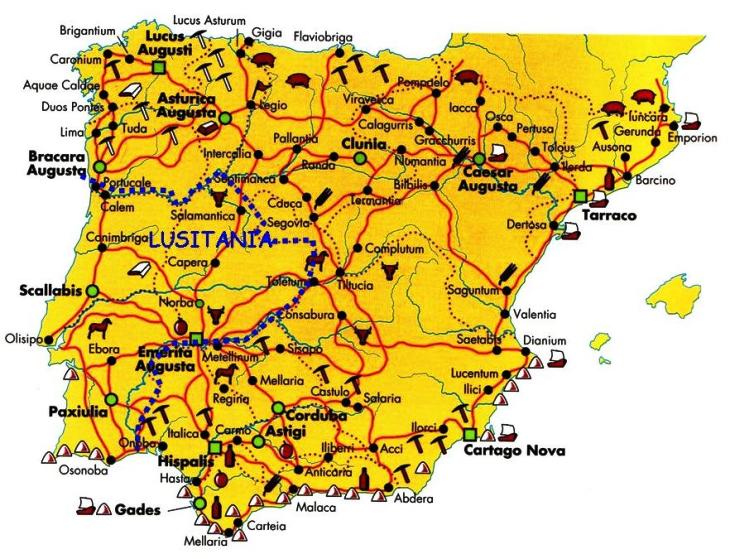
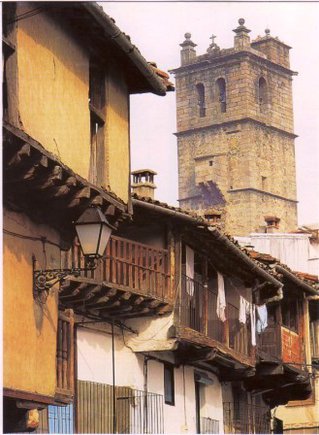
LUSITANIA
E90, A5 (east: exit 148 Oropesa; west: exit 7 Éstremos from E90, A6) /111/
Had we been alive in Roman times, we would have travelled the same main road as today between Toletum (Toledo) and Émerita Augusta (Mérida). Not far from Toletum we would have crossed the border between Tarraconensis and Lusitania, two Roman provinces in Hispania. It would have been a journey along stone-paved Roman roads, with the background noises of legionnaires marching and ox-drawn wagons rattling on the rough road surface.
Ca 130 B. C. Roman legionnaires came tramping into the Iberian peninsula. They soon suppressed the Lusitanians, the Iberian tribe which constituted the largest part of the inhabitants and later were to give their name to the province of Lusitania. The province covered large parts of today’s Portugal and Extremadura in Spain. It was a veritable goldmine for the Romans: here they found lead, iron and copper and further north silver and gold, which they put to good use as a method of payment.
The area was fertile in the valleys of the great rivers Duero, Tajo and Guadiana, with the cornfields floating gently in the wind and cows and horses grazing in the shade of oaks and olive trees. Small wonder, then, that the Romans settled quite happily in this pastoral part of the country, however rough and hostile elsewhere. What was needed, however, was transport routes, fortified towns and military defence forces, so they set out to build a complete network of roads, criss-crossing all of Hispania. Towns were founded and legionnaires dispatched from Rome to this area, which was to become a very prospering one for several hundred years to come.
VISIGOTHS AND ARABS
After the Romans came the Visigoths, who did not leave much of a mark. But the Arabs certainly did. The two rivers Tajo and Guadiana, both of them running through Spain in an east to west direction, formed the boundaries between the Arabs in the south and the Christians in the north. Many were the battles between those two parties, and villages and towns were being shunted back and forth, now under Arab, now under Christian rule.
Today all the castles and fortresses along the road tell their story of times gone by. One of these castles is in Oropesa, and if it’s time to consider your overnight accommodation, you could do worse than looking here, just the other side of the motorway. For in Oropesa lies a parador, which happens to be one of the best in Spain. It is housed in the “New Palace” which stands in the castle grounds and was built in the 16th century, whereas the castle itself is several hundred years older and probably of Muslim origin.
LA VERA – A SMILING GARDEN LANDSCAPE
We drive into the fertile Tietar valley, a scene of agricultural opulence, and approach La Vera which lies in the shelter of Sierra de Gredos to the north and gets its water supply from the Tietar in the south. Here we are greeted by olive groves, cork oaks, cherry trees and sheep grazing peacefully in the rich pastures. Along the road there are several quaint little villages with ramshackle houses, where the wooden balconies are leaning at dubious angles and the alleys between them so narrow the roof corners almost touch. No point bringing your car in here! But do make a stop at Villanueva, Cuacos, Garganta la Olla or Pasarón. Explore them on foot and be amazed!
By the way, “garganta” means ravine, and there are indeed many spectacular ravines in La Vera, where old Roman bridges balance precariously across the mountain gorges. It was in these parts that Charles V spent his last year after his abdication. For three months he lived in a magnificent castle in Jarandilla while waiting for his apartments in the Yuste monastery to be prepared for him. There he was able to enjoy peace and calm in beautiful surroundings. If you’d like to live like a king for a day, then check in at this castle which is now a parador.
THE TWIN CATHEDRALS OF PLASENCIA
As if one cathedral was not enough, Plasencia has two! The oldest of these had not even been finished when the building of cathedral number two was begun. Moreover, they are positioned side by side. It is interesting to contemplate and compare the two church façades, both of which reflect the spirit of its age. One was built in the Romanesque-Gothic style of the 13th century, the other in the Renaissance fashion of 200 years later. Maybe the older one had become outmoded and the authorities wanted a nice, new cathedral to show off? Plasencia had after all been an important episcopal see since the 12th century and later became the regional capital with a lively trade in, amongst other things, livestock and farming products from the fertile area around it. Many of Extremadura’s noble families moved into the city from the end of the 15th century onwards. Dukes, counts and marquesses had splendid palaces built for them, competing with each other in grandeur by way of magnificent, tall towers. Everyone wanted to show off their wealth, naturally.
In Plasencia much of the old still remains to this day. Walking through the town, here and there you come upon remnants of the old town wall with many of its gates and towers intact. It was originally built in the 12th century as a defence against the marauding Moors. The cathedrals, palaces, bridges and aqueducts are still to be seen and admired, as is indeed Plaza Mayor with its beautiful, arch-decorated houses, custom-made, you might say, for restaurants and night life! After dinner you can take a walk back to your parador, which is housed in a marvellous monastery. There you can snuggle down under the canopy of a four-poster bed, an unexpected feature in a monk’s cell!
FREE BUILDING MATERIAL
The beautiful landscape through which we are travelling from Plasencia to Cáceres is characterized by an ever-changing countryside of luxuriant valleys and barren highland. It looks a little like Wales with its stone walls around pastures where sheep, goats and cows roam around grazing in perfect peace. A little higher up on the meseta are smooth, flat rocks and huge boulders scattered around higgledy-piggledy. It cannot have been all that difficult to find building material here for the Roman theatres, temples, bridges, not to mention the long aqueducts. Even in those days they built huge dams which provided towns an agricultural fields with water. But the dam system we have now was not installed until the 1950s, making it possible to cultivate sizable areas with wheat, olives and tobacco along the glens and valleys. It is a dizzying thought, that the old “Via de la Plata”, the silver way between Seville and northern Spain, once upon a time ran just up here on the meseta, transporting precious metal on its way to Rome.
THE KNIGHTS OF CÁCERES
In the year 34 B.C. the Romans founded a colony at Cáceres, Norba Caesariana, which they fortified with ramparts. When the Arabs took over, they built a strong wall all around the town, which had an upswing and flourished into a new golden age during the 12th century. However, in the 13th century the Arabs were forced to give the town up and it was incorporated into the kingdom of Castile. The town became the headquarters of the Cáceres Fraternity, later the order of Santiago, the most illustrious Order of Knights Templar in all of Spain. Its mission was to defend the pilgrim route to Compostela. No fewer than 300 knights lived in Cáceres and it is from this background that many of Spain’s “conquistadors” were recruited. Most of them came from Extremadura. It was often the youngest, or the bastard sons of noblemen who sought their fortune in far-away countries since they found it hard to make a living at home. Well-schooled in warfare and used to a life of hardship as they were, these fearless warriors defended the Christian pilgrims against the Arabs in Spain with the same frenzy with which they attacked the Red Indians in America.
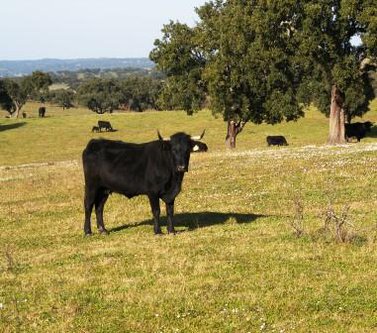
GRAND PALACES AND TALL TOWERS
Driving through this noisy, modern town today you don’t really expect there to be a walled old town centre in the middle of it, let alone one of the best preserved in Europe! But soon you will find yourself at Plaza Mayor where you can pass through Arco de la Estrella. On the other side a living museum awaits you with ancient palaces, all of them telling of the golden era, when “America money” was streaming into the coffers, enriching the citizens of the town.
Feast your eyes on all the beautiful façades while taking a leisurely stroll, admire Casa Toledo-Moctezuma, where the grandchildren of the Aztek ruler lived, and raise your eyes to its towers, still standing proudly. In the olden days there was often rivalry between the different house owners who built themselves magnificent towers, the higher the better, to show their neighbour who was the stronger man. To put an end to this one-upmanship Queen Isabella ordered the towers to be demolished. Only her favourites were allowed to leave their towers standing and these are the ones we are able to admire today, while contemplating the interesting lives of the knights.
SPECTACULAR FORTRESSES UP ON THE HILL
As we cross the border into Portugal, high mountains line up on either side of the road. Enthroned on top of one of them is the wall-encircled Marvão, very exciting to roam around, whether up on the actual wall or down in the little alleyways of the village. The view is panoramic, as is true of the view from the pousada, which is installed in a group of village houses, simple but very charming. Already in Roman times they understood the strategic importance of this location and in the 9th century Ibn Maruán, the leader of the Moors, entrenched himself high up on the inaccessible mountain top, giving his names to the area. A fortification was constructed and in the 13th century the walls were reinforced.
Up in this mountainous border country there are several summits with fortresses which have had to endure battles between Iberians, Romans, Visigoths, Arabs, Christians, Portuguese and Spaniards. You can actually see some of these fortresses from Marvão. So let us rotate our way down this mountain and up the next to have a look at Castelo de Vida! Here the castle lies in ruins after an explosion in the 18th century but is still worth a visit. You will wander through a well-kept town with a long tradition as a spa. In the town centre Praça de Dom Pedro V with its baroque palaces, churches and its town hall all form a harmonious unity. From here you have a splendid view of the castle, perched high on a clifftop. On the way to the castle you get to imbibe the medieval atmosphere of the town with its muddle of narrow alleys with rows of whitewashed houses, charming little squares and unexpected nooks and crannies here and there. Magnificent views over the town and its beautiful surroundings await you on the mountaintop.
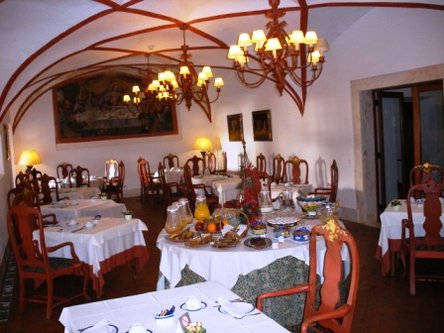
THE BAROQUE TOWN
The next town with a castle on a hill is Portalegre, which bears the epithet of “shop window into Baroque Portugal”. This old episcopal town had a boom period during the 16th and 17th centuries through a successful wool- and silk industry. Many entrepreneurs grew rich and built themselves stately homes with sumptuous façades, which can be admired on a walk between the cathedral and Praça de Republica. The old town centre is still encircled by a protective wall and the medieval castle ruin watches over the town and its surrounding vineyards. Here in Portalegre they produce 1,2 million litres of wine annually and this might be a good time to sample a Conventual or a Portalegre DOC, their two best wines, at one of the bars in the town.
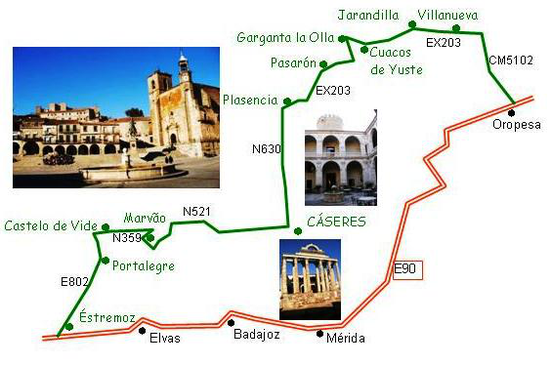
VINEYARDS AND MARBLE QUARRIES
We drive on and gradually leave the mountainous country behind us, as we approach “the real Alentejo”, known for its seemingly endless, softly billowing cornfields, pastures and vineyards. Around the districts of Souzel, Éstremoz and Borba the vineyards dominate the landscape and many cooperatives and private vintners are happy to open up their doors to keen customers. Here and there among the vineyards and olive groves several marble quarries are tucked away, yielding beautiful, shimmering white and pink marble. This is reflected in the adornment of churches, palaces, monasteries, churchyards, even the paving stones in nearby towns. A shining example of this is Éstremos where we found what must be the finest of the pousadas, which I would like to award a special wild strawberry of its own!
On this tour there are several good opportunities for overnight accommodation in paradors and pousadas. Read more about these luxury hotels along the Turquoise Route just before Hondarribia!
Ramshackle houses in Garanta la Olla
Funny characters in mountanous border country
Marvão balancing on the cliff edge
Breakfast
is served